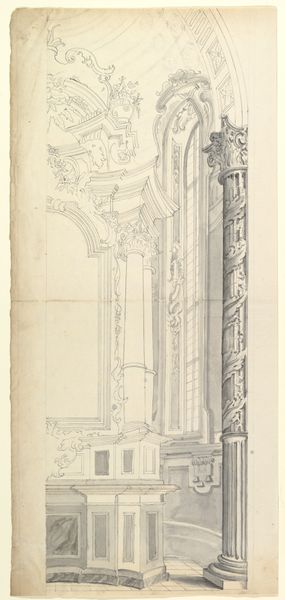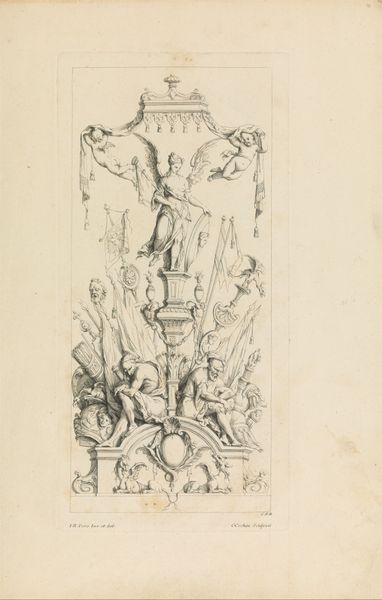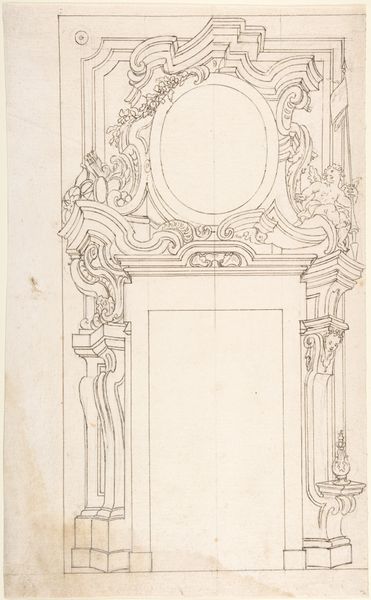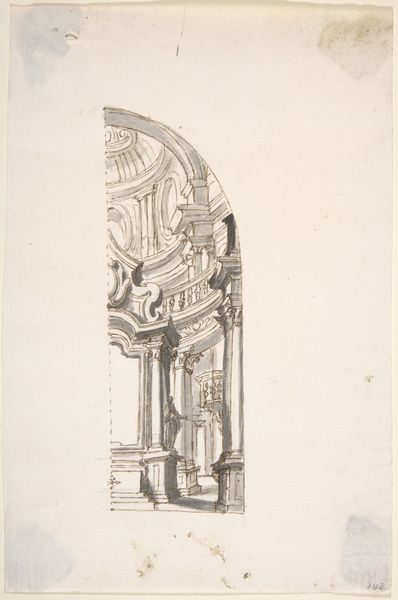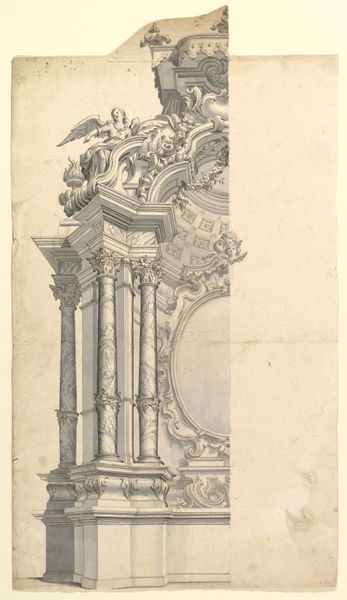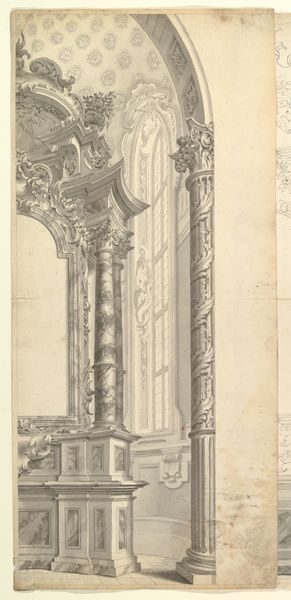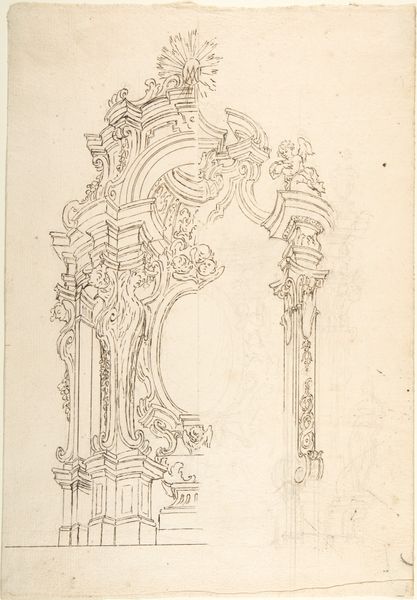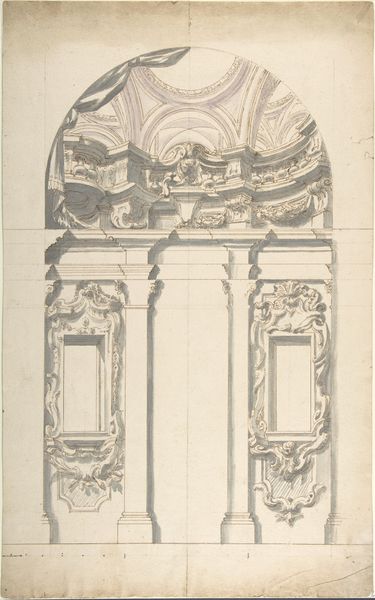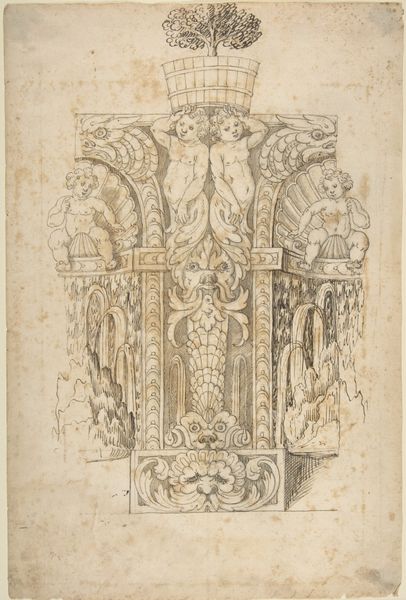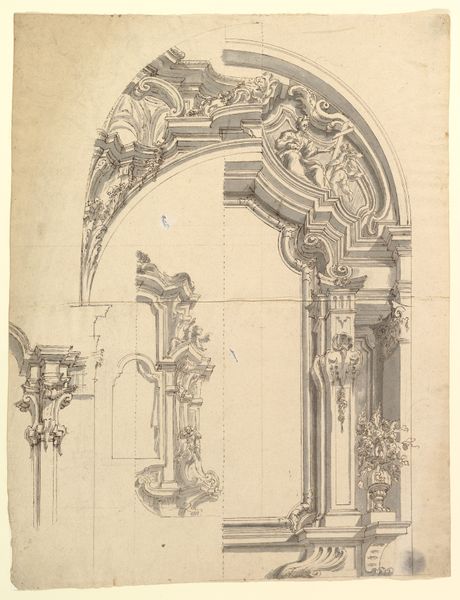
Design for One Half of the Apsidal Space Enclosing an Organ 1700 - 1780
0:00
0:00
drawing, ink, architecture
#
drawing
#
baroque
#
ink
#
geometric
#
architecture
Dimensions: 15-1/8 x 8-3/4 in. (38.4 x 22.2 cm) irregular borders.
Copyright: Public Domain
Curator: Just the skeletal remains of something monumental... almost ghostly. Editor: That’s quite a vivid reaction to a fragment! We’re looking at "Design for One Half of the Apsidal Space Enclosing an Organ," an ink drawing made sometime between 1700 and 1780. Its artist is, alas, anonymous. The kind of image an architectural historian like myself can really sink her teeth into! Curator: An anonymous masterpiece… There's such delicate detail in those baroque flourishes, you know? Makes you wonder who poured over every line, imagining this… space. It feels almost meditative in its stillness. Editor: The anonymity does speak to a certain reality of artistic production during that period—craftsmen were often seen as just that, craftsmen, rather than individual artists. Still, considering its likely religious context, there’s no doubt that this drawing held both spiritual and socio-political weight. Organ placement and design wasn’t just about acoustics. It was about power, presence. Curator: Exactly! A spectacle, then… and now this ghostly premonition. Like an echo of ambition. Editor: An echo struggling to compete against emergent, more revolutionary social structures… consider this design within shifting perspectives of music, devotion, the individual, the collective… the drawing becomes charged with tensions between tradition and modernity. Look closely at how rigidly ordered are those organ pipes and then note how extravagantly chaotic and ornate the proscenium arches around them appear, that kind of tension, that pre-revolutionary creative outpouring is just spectacular! Curator: A rebel yell hiding within the status quo… Perhaps. It's that yearning for the monumental, though— the unseen sounds waiting to fill that apsidal space. And how that unplayed music seems intrinsically linked with revolutionary undertones! Editor: Indeed. What strikes me is how this design offers us not only insight into past aesthetics, but it challenges us to reflect on power structures then and now. Who gets to make music? Who has access to it? Whose voices echo in the halls of history and whose are silenced? Curator: Poignant thoughts! Looking at this, I keep wondering: Will there be anything this fragile and earnest remaining in the ruinous future? Editor: As an activist I feel there always must be – we fight so these questions echo!
Comments
No comments
Be the first to comment and join the conversation on the ultimate creative platform.

